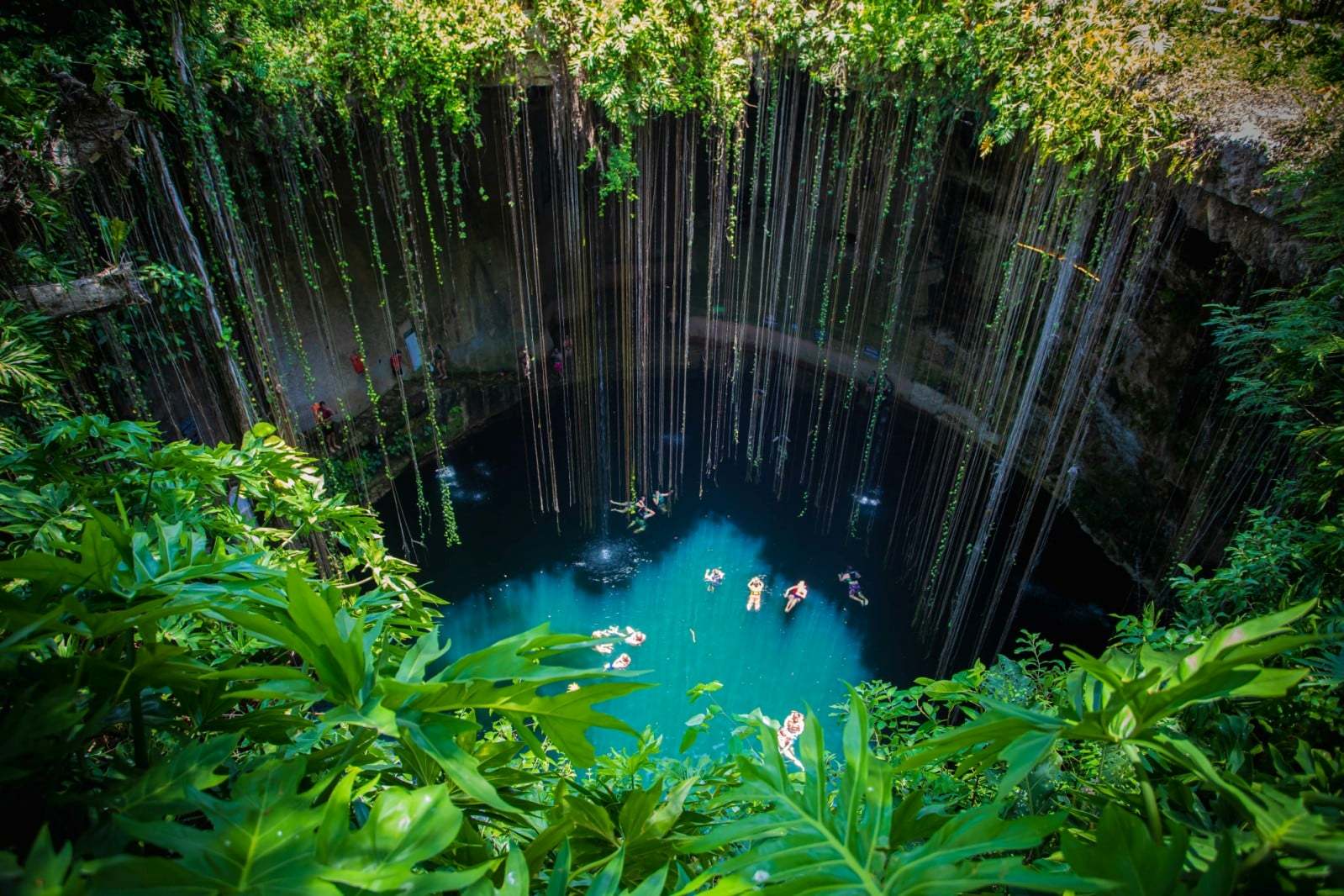
Cenotes are natural sinkholes found primarily in Mexico's Yucatán Peninsula. These stunning formations are created when limestone bedrock collapses, revealing groundwater underneath. Cenotes have been significant to the Mayan civilization, serving as sources of water and sites for rituals. Today, they attract adventurers and nature lovers alike. But what makes these geological wonders so special? Cenotes offer unique ecosystems, crystal-clear waters, and a glimpse into ancient history. Whether you're planning a visit or just curious, these 32 facts will give you a deeper appreciation for these natural marvels. Dive in to learn more about the magic of cenotes!
What is a Cenote?
Cenotes are natural sinkholes or wells found primarily in Mexico's Yucatán Peninsula. These unique geological formations are created when limestone bedrock collapses, revealing groundwater underneath. Cenotes have been significant to the Mayan civilization and continue to fascinate people today.
- The word "cenote" comes from the Mayan word "dzonot," which means "sacred well."
- Cenotes were considered sacred by the ancient Maya, who believed they were portals to the underworld.
- There are over 6,000 cenotes in the Yucatán Peninsula.
- Cenotes can be open, semi-open, or underground, depending on their age and formation.
- The water in cenotes is usually crystal clear due to the natural filtration through limestone.
Types of Cenotes
Cenotes come in various forms, each offering a unique experience. Understanding the different types can enhance your appreciation of these natural wonders.
- Open cenotes resemble natural swimming pools and are the oldest type.
- Semi-open cenotes have partially collapsed roofs, allowing sunlight to filter through.
- Underground cenotes are fully enclosed and often require climbing down to access.
- Cave cenotes are entirely underground with no natural light, requiring artificial lighting to explore.
- Some cenotes connect to underground river systems, forming intricate networks.
Cenotes and the Mayan Civilization
The Mayans had a deep connection with cenotes, using them for various purposes, from daily life to religious rituals.
- Cenotes were a primary water source for the Mayans, especially during dry seasons.
- Many cenotes contain artifacts and human remains, indicating their use in sacrificial rituals.
- The Sacred Cenote at Chichen Itza was used for offerings to the rain god Chaac.
- Mayan cities were often built near cenotes to ensure a reliable water supply.
- Some cenotes were believed to be inhabited by gods or spirits.
Flora and Fauna in Cenotes
Cenotes are not just geological wonders; they are also rich ecosystems supporting diverse plant and animal life.
- Cenotes are home to unique species of fish, some of which are found nowhere else.
- Blind cavefish, which have adapted to the dark environments of underground cenotes, are a notable example.
- The water lilies and ferns around cenotes create a lush, tropical environment.
- Bats often inhabit cave cenotes, contributing to the ecosystem by controlling insect populations.
- Cenotes also support various bird species, including swallows and owls.
Cenotes and Tourism
Cenotes have become popular tourist attractions, offering activities like swimming, snorkeling, and diving.
- The Gran Cenote near Tulum is famous for its clear water and snorkeling opportunities.
- Cenote Dos Ojos is renowned for its extensive underwater cave system, attracting divers worldwide.
- Many cenotes have facilities like changing rooms and equipment rentals to accommodate tourists.
- Guided tours often include cenote visits, providing historical and ecological insights.
- Some cenotes, like Ik Kil, have platforms for diving into the water from heights.
Environmental Concerns
While cenotes are beautiful and fascinating, they face environmental challenges that need attention.
- Pollution from nearby developments can contaminate cenote water, affecting both humans and wildlife.
- Over-tourism can lead to physical damage to cenote formations and surrounding ecosystems.
- Efforts are being made to protect cenotes through conservation programs and sustainable tourism practices.
- Local communities play a crucial role in maintaining the health and cleanliness of cenotes.
- Educating visitors about the importance of preserving cenotes is essential for their long-term survival.
Fun Facts about Cenotes
Cenotes are full of surprises and interesting tidbits that make them even more intriguing.
- Some cenotes have underwater stalactites and stalagmites, formed over thousands of years.
- The temperature of cenote water is usually around 77°F (25°C), making it refreshing but not too cold.
Final Splash of Cenote Wisdom
Cenotes are more than just natural swimming holes. They’re windows into ancient worlds, offering glimpses of Mayan history and unique ecosystems. These underwater caves and sinkholes, found mainly in Mexico’s Yucatán Peninsula, are formed when limestone bedrock collapses, revealing groundwater underneath. Cenotes were sacred to the Mayans, who believed they were portals to the underworld. Today, they attract adventurers and divers eager to explore their crystal-clear waters and intricate cave systems.
Whether you’re fascinated by their geological formation, historical significance, or simply their breathtaking beauty, cenotes offer something for everyone. They’re a testament to nature’s artistry and a reminder of the mysteries still hidden beneath the earth’s surface. So next time you find yourself in the Yucatán, take a dip in a cenote. You’ll be swimming in history, culture, and natural wonder all at once.
Was this page helpful?
Our commitment to delivering trustworthy and engaging content is at the heart of what we do. Each fact on our site is contributed by real users like you, bringing a wealth of diverse insights and information. To ensure the highest standards of accuracy and reliability, our dedicated editors meticulously review each submission. This process guarantees that the facts we share are not only fascinating but also credible. Trust in our commitment to quality and authenticity as you explore and learn with us.
